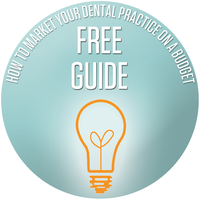
3D printing is becoming more common in dental offices. It offers new ways to create crowns, dentures, and other tools quickly and in-house. But is it the right choice for your practice? This guide breaks down the costs, benefits, and key questions to help you decide.
Key Takeaways
- 3D printing can save thousands on lab fees by producing restorations in-house.
- Initial setup costs range from $7,500–$15,000, plus materials and training.
- Practices report 80–90% faster turnaround times, leading to happier patients.
- Digital impressions offer better fit and comfort, reducing chair time.
- Most dentists using 3D printing say it improves efficiency and control.
- Practices doing 15+ restorative cases/month are most likely to benefit.
- Even smaller practices can use 3D printing to offer more services and stand out.
 What Is 3D Printing in Dentistry?
What Is 3D Printing in Dentistry?
Dental 3D printing uses digital scans to create physical models and tools. Instead of sending impressions to a lab, you can print items directly in your office. Common uses include:
- Crowns and bridges
- Dentures
- Surgical guides
- Night guards
- Diagnostic models
👉 Learn more about dental 3D printing
👉 Related: Do’s and Don’ts for a High-Tech Dental Office — Learn how to integrate new tech smoothly into your workflow.
 What Does It Cost?
What Does It Cost?
Costs vary depending on the printer and setup. Here’s a general breakdown:
- 3D Printer: $7,500–$15,000 for a mid-range model
- Materials (resins, etc.): $1,000–$3,000/year
- Software: Monthly or annual fees
- Training: Time and cost to train staff
- Maintenance: Cleaning, repairs, updates
These costs should be weighed against your current lab expenses and workflow needs.
👉 Compare popular dental 3D printers
👉 Related: Manual and Mechanical Dental Instruments: Which Are Better? — A look at transitioning from traditional tools to modern solutions.
 How Can It Save You Money?
How Can It Save You Money?
Many dental offices use 3D printing to reduce lab costs. For example:
- Lab-made crowns or dentures: $200–$400 per case
- 20 cases/month = $4,000–$8,000 in lab costs
- In-house printing = major savings
Some practices report breaking even within a few months, but results vary.
👉 See ROI examples from dental offices
 What About Turnaround Time?
What About Turnaround Time?
3D printing can speed up case delivery. Traditional methods may take 1–2 weeks, while in-office printing can allow:
- Same-day or next-day crowns
- Faster emergency care
- Quicker service for busy or remote patients
Some practices report 80–90% faster turnaround times.
👉 Read case studies on turnaround time
👉 Related: How AI in Dentistry is Shaping the Future — Discover how automation and AI are speeding up dental care.
 How Does It Affect Patient Experience?
How Does It Affect Patient Experience?
Digital impressions and 3D printing may improve comfort and accuracy. Benefits can include:
- Better fitting restorations
- Less chair time
- Fewer follow-up visits
- No messy impression trays
These factors can contribute to higher patient satisfaction.
👉 Review on patient satisfaction
👉 Related:
- How to Improve Your Dental Patient Experience: Starting with Staff
- Tips to Make Your Dental Office More Comfortable
 What Are Dentists Saying?
What Are Dentists Saying?
According to the American Dental Association:
- 17% of dentists currently use 3D printers
- Most users report improved efficiency and cost control
- Common uses: models, splints, surgical guides
Among non-users 21% are considering it and 35% want training.
👉 ADA report on 3D printing in dentistry
 Is It Right for Your Practice?
Is It Right for Your Practice?
3D printing can be most useful for practices that:
- Handle 15+ restorative cases per month
- Offer orthodontics, oral surgery, or cosmetic dentistry
- Want more control over turnaround time and workflow
Practices focused mainly on cleanings and exams may see fewer benefits, but it could still offer value depending on your goals.
👉 ROI analysis for dental 3D printing
3D printing offers new possibilities in dental care, but it’s not a one-size-fits-all solution. It’s important to consider your practice needs, patient volume, and budget before making a decision.
Questions to ask:
- How many lab cases do I send out each month?
- What are my current lab costs?
- Could faster service improve patient satisfaction?
- Do I have the time and staff to learn a new system?
Doing your own research and comparing options will help you decide if 3D printing is a smart move for your practice.
Interested in joining the Solstice dental network? Partner with a trusted leader in dental benefits and unlock access to thousands of potential patients. Our dedicated Provider Relations team is here to guide you every step of the way.
📞 Call us at 1.877.760.2247 (Option 2)
📧 Email: providerrelations@solsticebenefits.com



